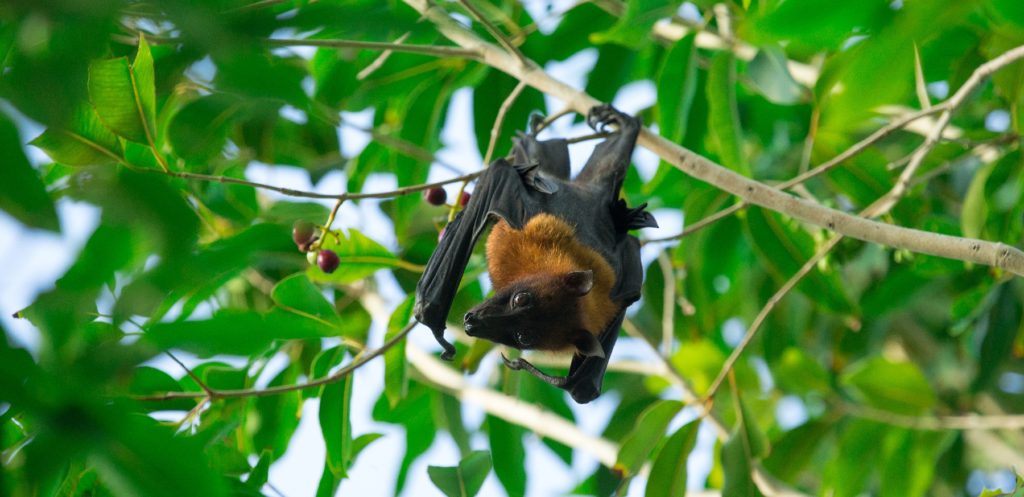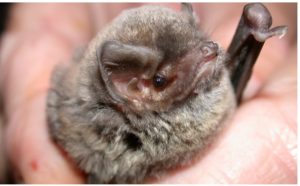There are two primary suborders that all bats can be categorized in depending on their particular biologics and physiognomies. These suborders are Microchiroptera and Megachiroptera. Continue reading to learn about them both, and the attributes that set them apart.

Megachiroptera – Fruit Bat
Classification of Bats
Bats are part of the Animal Kingdom, and further broken down into narrower classifications, including the Chordata Phylum, Mammalia Class, and of course, the Chiroptera Order. Within the Chirptera Order, bats are categorized into one of two suborders: Microchiroptera and Megachiroptera. Also referred to as microbats and megabats, these suborders are quite different in size, diet, habitat, and more.
Microchiroptera – Microbats
Microchiroptera bats are small, echolocating bats that maintain an insectivorous diet, with the exception of Vampire Bat species, which retain a dietary trait called hemotophagy, and consumes small droplets of blood on livestock like cows, horses, sheep, and goats. Other than Vampire Bats, microbats primarily eat a wide variety of insects, including moths, flies, mosquitos, grasshoppers, dragonflies, crickets, beetles, termites, ants, and more. It is rare, but some larger species of microbat hunt birds, lizards, frogs, smaller bats, or even fish. They generally roost in trees, caves, abandoned mines, and buildings in forested or wooded areas that are near bodies of water. Microbats make up the nuisance bat populations in our area of the country, with 9 species of bat native to Virginia.

Microchiroptera Bat
Megachiroptera – Megabats
Megachiroptera bats only includes one family, Pteropodidae, but can be further narrowed into 7 Subfamilies, including Nyctimeninae, Cynopterinae, Harpiyonycterinae, Macroglossinae, Pteropodinae, Rousettinae, and Epomophorinae, and 166 different species. Also known as megabats, old world fruit bats, and simply, fruit bats, Megachiroptera is a significantly different suborder of bats compared to Microchiroptera. They are much larger in size, and live in tropical and subtropical climates. The most significant difference is that they do not possess echolocation abilities, nor do they eat insects.
Instead, megabats have large eyes and have great vision. Furthermore, they maintain nectarivores and frugivorous diets that primarily consist of plant material, such as fruit, nectar, or pollen. Megabats make their homes in trees, shrubs, and sometimes caves located near edges of water. They play an integral role in the surrounding ecosystem because they help to spread seeds and pollen through feeding and elimination.
Virginia Bat Removal and Control

Virginia Bat Removal and Control 804-729-9097
